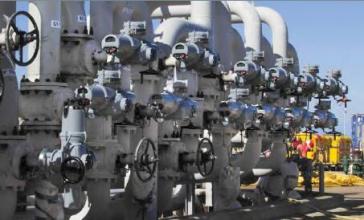Category: Sanitary Valves News
The Unique Performances of Titanium Valve
Why is titanium used in valves? Titanium looks very similar to steel. Its density is 4.51 grams per cubic centimeter, which is 57% of the density of steel. It’s the metal element that has the lowest density among refractory metals. Titanium is a highly chemically active metal. However, it exhibits particularly excellent corrosion resistance to […]
Read moreCommon Malfunctions of Directional Valve
Common malfunctions of the directional valve include the inability of the valve to change direction or the action of changing direction is slow, gas leakage, and malfunctions of the electromagnetic pilot valve. 1. Inability of the directional valve to change direction or the action of changing direction is slow. This is usually caused by poor […]
Read moreWhy do We Choose Stainless Steel in Sanitary Process Systems?
What is it that makes stainless steel “stainless” and why is stainless steel the material of choice for clean process segments? This post will concentrate on those inquiries and give knowledge into a term that is regularly misrepresented. Stainless steel, in the same way as all steels, is made essentially of iron and carbon. Steel is made […]
Read moreThe Introduction of Vacuum Valve
Vacuum valve is a kind of valve whose working pressure is below standard atmospheric pressure. Several common connection types of vacuum valve: 1. Flange connection This is the most commonly used connection type in sanitary valves. According to the shape of the joint surface, it can be again divided into the following types: 1) Smooth […]
Read moreWhat is a Sanitary Tee?
What are Sanitary Tees? Sanitary tees are t-shaped sanitary pipe fittings used in the branch pipe of the main pipeline. Under normal use, sanitary tees connect a branch line to a vertical drain line or vent line. Sanitary tees can be made with a consistent diameter or different diameters to connect to pipes or valves […]
Read moreThe Structural Characteristics of Sanitary Plug Valves
Sanitary plug valves have four major structural characteristics: 1. Sanitary plug valves are among the first sanitary valves to be used by human beings in history. As a result of simple structure, quick opening and closing (opening and closing can be achieved when the plug rotates one-quarter round), easy operation, small fluid resistance, they are still […]
Read moreThe Advantages and Disadvantages of Gate Valves
What is a Gate Valve? Gate valves are a type of valve that is widely used in many different pipeline systems to connect and shut off the flow of the medium. Gate valves are not suitable for regulating the flow of the medium, but they can judge the amount of flow according to the height […]
Read moreHow should the Food Factory choose Sanitary Valves?
The imported sanitary valve is made of stainless steel whose body meets the sanitary standard. Besides that, its polishing degree and cleanliness, as well as the fittings also should meet the sanitary standard. Sanitary valves are mainly used in the plumbing systems of the food, beer, and beverage industries. We can select different types of sanitary valves […]
Read moreThe Comparison Between Solenoid Valves and Electric Valves
What is the difference between solenoid valves and electric valves? Specifying the differences between the solenoid and electric valves can be a confusing task because both function similarly. However, the experts at Adamant Valves were kind enough to explain the 4 key differences between these two types of sanitary valves. We shared their information in […]
Read moreHow Does Emergency Action Valve Work?
What is Emergency Action Valve Work? When malfunctions occur, in order to ensure the safety of the system, it is often necessary for the valve to quickly open or close within 0.2 to 1 second. Sanitary regulating valve with this function is called the quick action valve. Currently, the electric actuator hasn’t yet been able to meet […]
Read more













